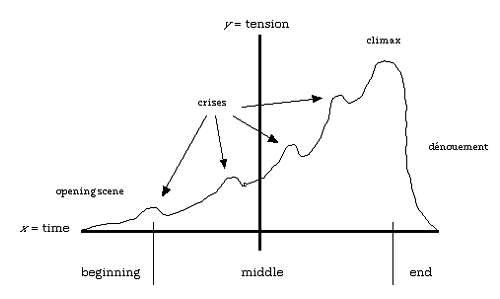Unlike other species, humans make meaning of the world around them through narrative. Since the dawn of communication, we’ve looked to advance our storytelling with things like cave drawings and figurines. Over time that has slowly evolved into puppetry, to performance theater, to music and dance. Utilizing even more mediums, stories have evolved through photography and cinema, video games, virtual reality, and even with websites! Just like our previous blog on UI/UX, there’s a lot we want to talk about.
Basics of Storytelling
Stories entertain us and share our similar experiences. They teach us lessons and they pass on traditions whether it be mythical, historical, or didactical. Storytelling in 2016 is no different. Information is now fragmented across mass media channels and delivered through ever-changing technology. Stories have the power to assimilate fragments into a comprehensive whole and continue to connect individuals with the lesson or message.
So, you may ask, how does this all relate to UI and UX design?
The Language of UX
When words are not enough to communicate our stories, we expand our “vocabulary.” Websites, virtual reality, and mobile apps are all a part of this vocabulary. And guess what? The main character is YOU, the user! Have you ever noticed how many tiny animations that transition you from application to application on your phone? That exists solely to give YOU the easiest and most pleasurable user experience.
This designed experience can offer meaning and emotion for its users. Not only is a story important for the user but it’s also important for the development team! In UX design, using a well-thought-out narrative can: bring teams together, creates user-centered goals, and defines the user.
Human history has testified to the success of focused ideas. Look at this chart, this structure has transcended time, language, and distance!
A well-developed User Experience helps:
• Put a human face on dry data
• Simplify complex ideas for a team
• Facilitate collaboration and purpose for greater team efficiency
• Give insight into the key users
• Set a project direction faster
• Build better communication within large agencies/organizations
• Delivers meaning and value to users
Which Came First: UX or The User
Users are the most important part of UI and UX design. Without the user, then the system just has intuitive design for design sake rather than for function. Your overall design should target a user, making them feel as the lead character in a story arc with beginning, middle and end. You almost have to create a tall tale surrounding the lead character, so the life of your product or service can be more useful, more productive, and consequently, more successful.
Storytelling effectively delivers significant information gathered during research and promotes a better recall rate of that information. Emphasis on the user/lead character allows for deeper understanding of emotions and motives for each design decision.
We can and should focus on creating a simple task-driven and functional website/application to obtain valuable human connection. We are, after all, a “global campfire” as Curt Cloninger refers to it. He goes on to say, “But the web is not a global network of connected computers. The web is a global network of connected people. And storytelling is still the most effective way to emotionally impact people.”
Storytelling is a way to connect teams quickly, and gain insight and understanding. The experiences we create communicate with those elements through the design, content, and user interaction. Storytellers have successfully been communicating for much longer than websites have been around — which makes it a valuable tool from the business side of design.
Knowing that emotion is so vital to how we think makes it more important to create not just a functional and usable experience, but to seek out and make a meaningful connection with the user. When you’re ready to bridge the gap between your clients and your business, get a hold of our Web Design team to make sure you’re seeing all of your options with online marketing.










